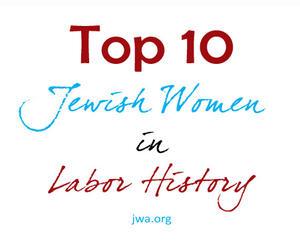10 Things You Should Know About Clara Lemlich
-
When Clara Lemlich was growing up in the Ukraine, her religious parents did not want their daughter learning Russian, the language of an antisemitic empire. But the strong minded girl was drawn to Russia’s literary masters—Tolstoy, Gorky, and Turgenev—and to the revolutionary literature being written in Russian. She took on odd jobs—sewing buttons, teaching folk songs, writing letters for illiterate women—to pay for Russian lessons and later for books she kept hidden from her family.
-
Following the Kishinev pogrom in 1903, the Lemlichs, like many other Eastern European Jewish families at the turn of the century, decided to immigrate to the United States. They settled in New York City where Clara found work in a Lower East Side garment sweatshop. She was 17 years old and already considered herself a communist and revolutionary.
-
From the first day, she found the working conditions of the garment shops intolerable; soon she started to organize her fellow workers into an all-female chapter of the newly formed International Ladies’Garment Workers’ Union. This caused conflict with the union’s male leaders who did not believe it was worthwhile to organize women. Clara Lemlich believed passionately that the union needed the support of women workers if it were to make gains in the struggle for labor reform.
-
In spite of a lack of support from the union’s male leaders as well as from the middle-class women reformers who ran the Women’s Trade Union League, Clara Lemlich brought her female co-workers— the farbrente maydlakh (“the fiery girls” in Yiddish)—out on strike several times between 1907 and 1909. In the fall of 1909, she persuaded women garment makers to stage a general strike, which came to be known as the “Uprising of the 20,000.”
-
The vote to strike followed an impassioned speech she gave in the Great Hall of Cooper Union. “I am one of those who suffers from the abuses described here, and I move that we go on a general strike,” she said in Yiddish. While the massive strike succeeded in winning some basic labor reforms, several Lower East Side garment companies, including the Triangle Waist Co., refused to improve working conditions or safety.
-
Blacklisted in the garment industry following the “Uprising,” Clara devoted herself to the women’s suffrage movement. She helped to found the Wage Earners League for Woman Suffrage, but was fired from her job with the organization because her views were too radical for the more moderate suffragists who ran the League.
-
In 1913 Clara married printer Joe Shavelson. The couple moved to Brooklyn and had three children. She focused her energies on getting other wives and mothers involved in social issues including food safety, housing, and public education. She was a leader in the kosher meat boycotts of 1917, called to protest rapid price increases. Two years later, she was involved in the rent strike campaign that occurred in response to a dramatic increase in the cost of decent housing after the end of WW I.
-
In 1926, Clara Lemlich Shavelson joined the Communist Party. As a member of the CPA, she helped launch the United Council of Working-Class Housewives and the United Council of Working-Class Women. Her loyalty to the Communist Party made life difficult for her and her family during the Cold War. She was called to testify before the House Un-American Activities Committee, and her family was investigated and put under surveillance for two decades.
-
The last chapter of her career saw a return to her roots in the garment industry and the labor movement. Once again she went to work for the International Ladies’ Garment Workers’ Union. She also served on the American Committee to Survey Trade Union Conditions in Europe and organized for the American League Against War and Fascism.
-
In her eighties, Clara became a resident of the Jewish Home for the Aged in Los Angeles. Despite her age, her activist spirit never wavered. She helped the orderlies form a union and persuaded the home’s administrators to participate in the United Farm Workers grape boycott. She died in 1982 at the age of 96.








I loved this Article about Clara Lemlich I am doing a lot of research about her.And this Article Helped me a lot with my research. Thank you for writing this Article.
Thank you for the article. It took me back home. I was born in Kishinev and came to Us in 1991.